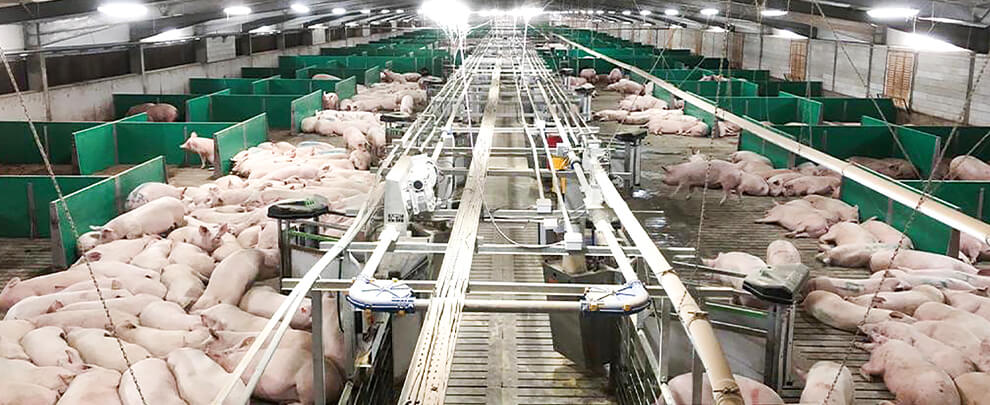Blog
Blog

The pig sector in Argentina, growing year after year
28th July 2021 - News
For 20 years, Argentina’s pork sector has been growing tangibly year after year. Although it is a small sector in Argentina, efforts to eradicate classical swine fever (CFP), promoting pork consumption and export development have helped the country, traditionally an importer of pig products, become an exporter with sufficient capacity local fresh meat market. In addition, the country is characterised by its wide availability of areas and agro-ecological conditions suitable for the rearing of pigs, which cater to respecting animal welfare and protecting the environment.
Production
The production of pork in Argentina has numerous advantages, such as the availability of maise and soybeans, two foods that form the basis of feeding pigs and account for the main cost of production, a favourable climate, availability of fresh water and absence of health threats. All this contributes to Argentina being one of the countries with the lowest production costs.
Thanks to these factors, Argentina produced 775,000 tonnes of pork by 2020, a very high number compared to the quantity produced in 2002, which was only 136,000 tonnes (Figure). Over the past 20 years, production has increased by around 10.3% each year, peaking in 2004 (18.3%) and 2013 (18.1%). The primary purpose of this meat is the production of cold cuts and other foodstuffs and fresh consumption.
Exports and imports
In the first decade of the 2000s, Argentina exported little pork, but recognition as a swine fever-free country (CFP) made it a desirable commercial alternative. Thus, in 2008 there was already evidence of the first significant exports, but growth began to be important in 2015. Since then, Argentina has managed to place its pork products in 13 destinations, with China being its primary market, with a 67% of total exports.
Currently, the share of exports relative to the total production is 5.4%. On the other hand, 2020 was the first year with a favourable trade balance in terms of the export-imports ratio, both in quantity and foreign exchange. Given this increase in exports, the Argentine government created a new process for meat exports in 2021.
Regarding imports, it should be noted that Argentina imported 50% of the pork consumed in 1999. The situation was very different in 2020 when the country has reached only 2% of imports compared to production. Much of the imported meat comes from Brazil and is frozen unboned pork.
Consumption
According to data from the Argentine Association of Pig Producers, the consumption of pork in the country in 2017 became 14 kg per inhabitant per year, a figure that shows an upward trend in the consumption of this food in the country, especially if we take into consideration that, in 2012, consumption was 8.6 kg per inhabitant per year. However, the figure is lower than beef consumption, which is the most consumed meat in the country (57 kg per inhabitant per year). Despite this, the campaigns to promote pork contribute to this product increasingly present in Argentine dishes.
Future
Argentina’s pork sector has achieved satisfactory results in recent years and has positioned itself as one of the fastest-growing sectors within the country’s agro-industrial area. In addition, the need to reduce beef consumption and the implementation of meat substitution policies are presented as an opportunity for the development and consolidation of swine production.
Given the growth that has occurred over the past 20 years, the increase in the local fresh meat market and the increased share of exports, it is estimated that by 2030 the production of pork in Argentina will exceed 1.4 million tonnes.
For exports, it is estimated that they could exceed 10% of the total production. On this topic, the international shape of the markets presents scenarios where only those countries that can self-benefit from the resources necessary for their production, to compete. Something that Argentina easily complies with.
With all this and thanks to the publicising of consumption and the development of new marketing channels, pork has found a place in the dish of Argentines and has an essential margin of growth. Therefore, in the coming years, it should be a priority to strengthen health controls to maintain the excellent status achieved (Argentine pigs are free of major diseases affecting the species), improve on issues such as sustainability, environmental impact or responsible use of antibiotics. Thus, Argentina has all the advantages to become a large pig producer.






